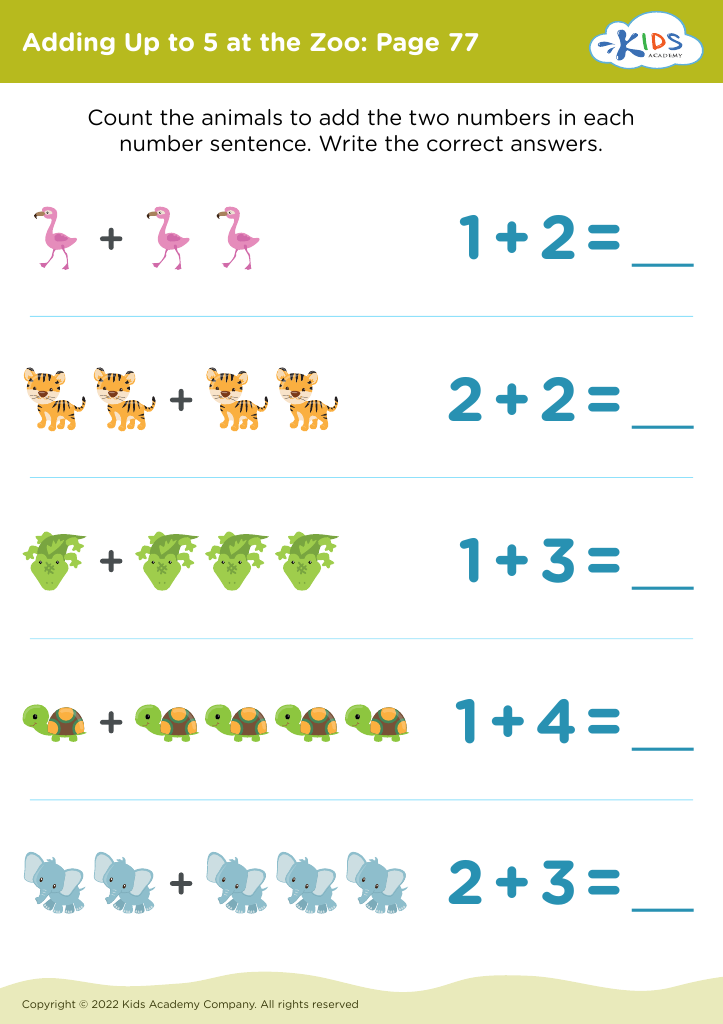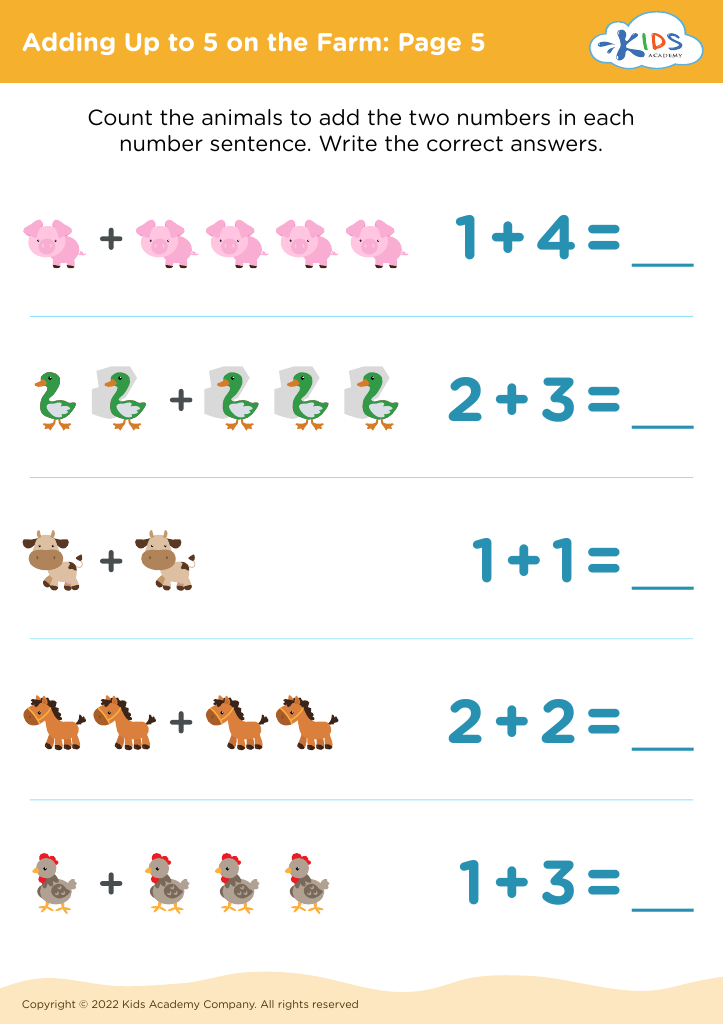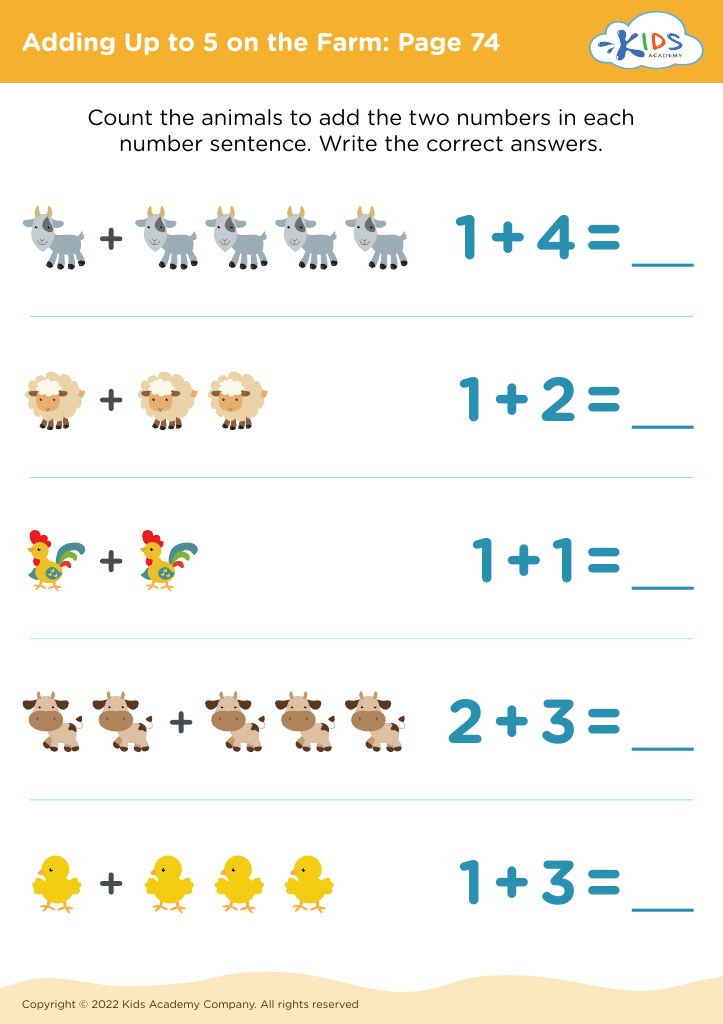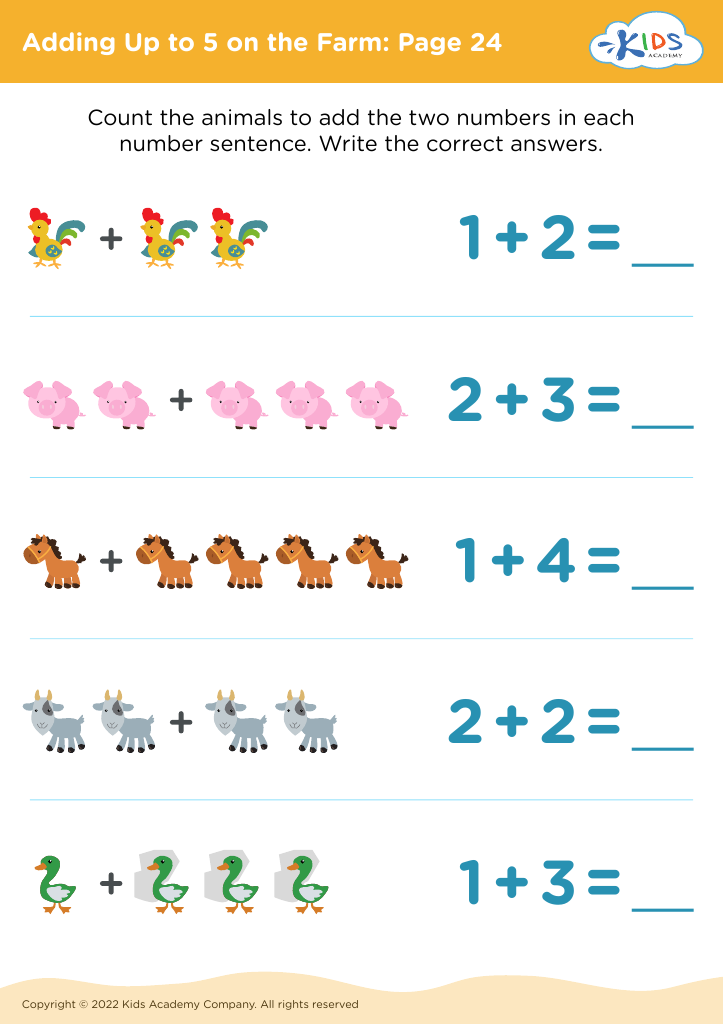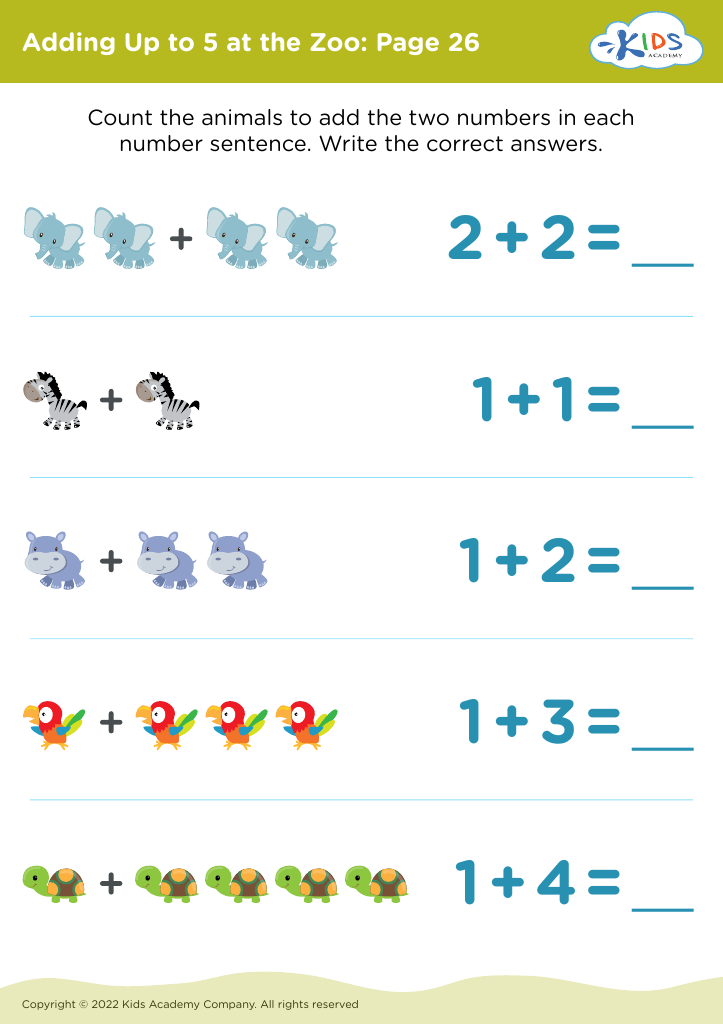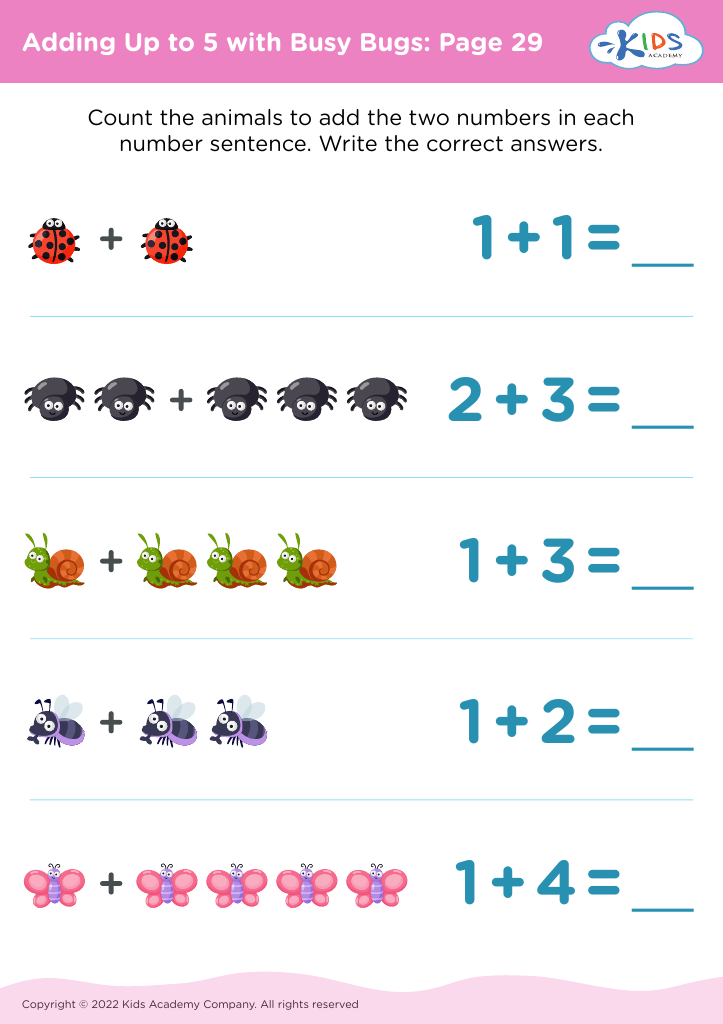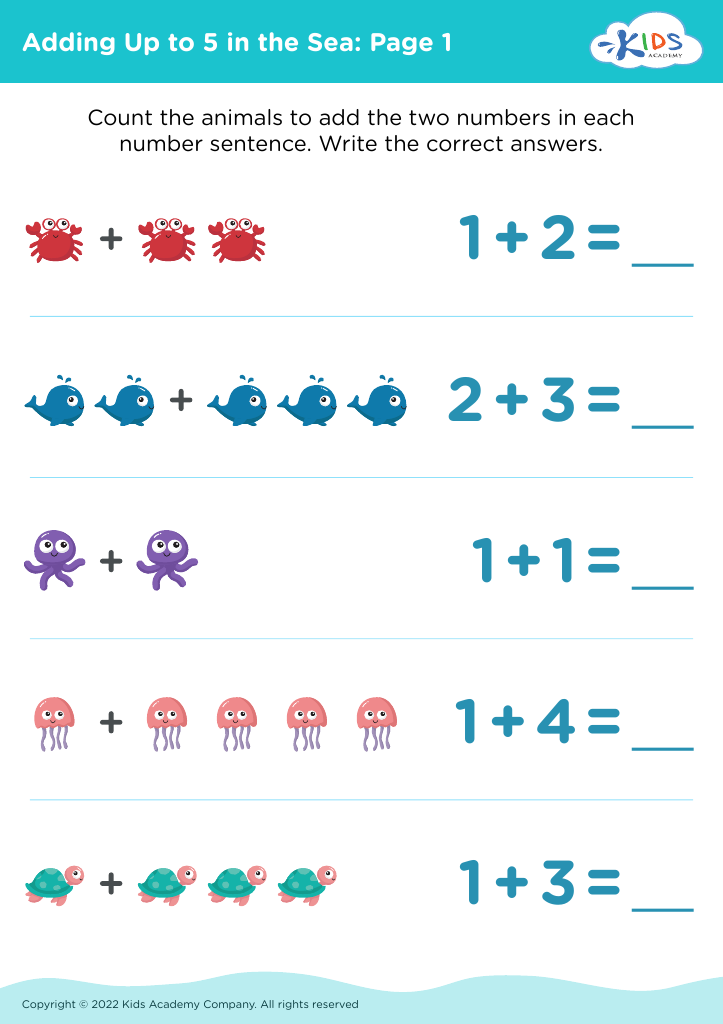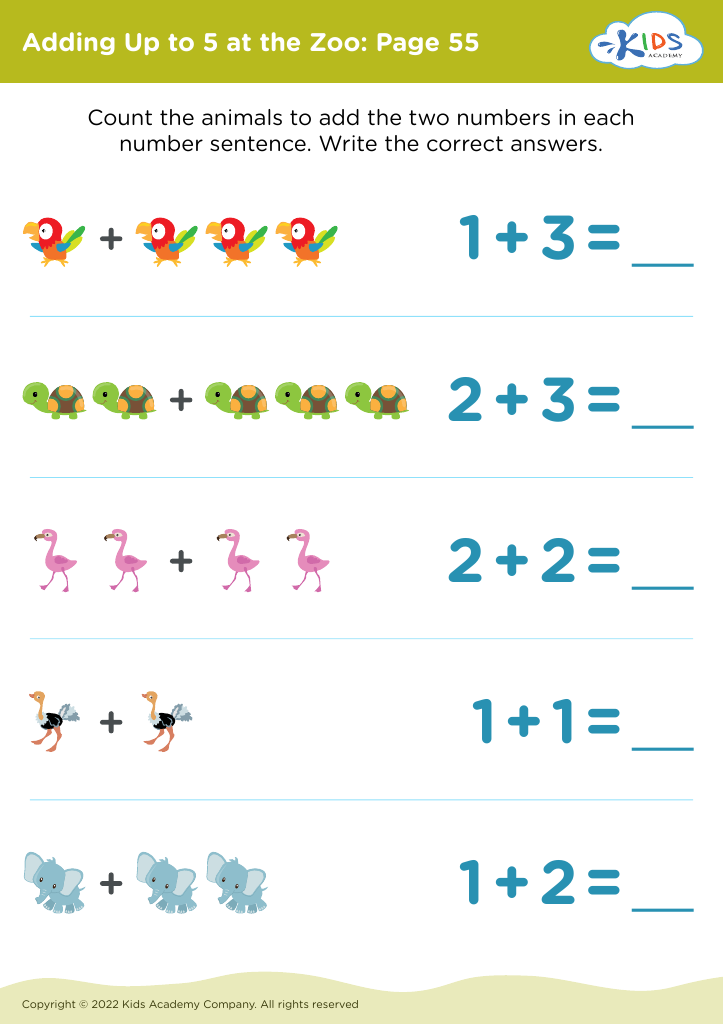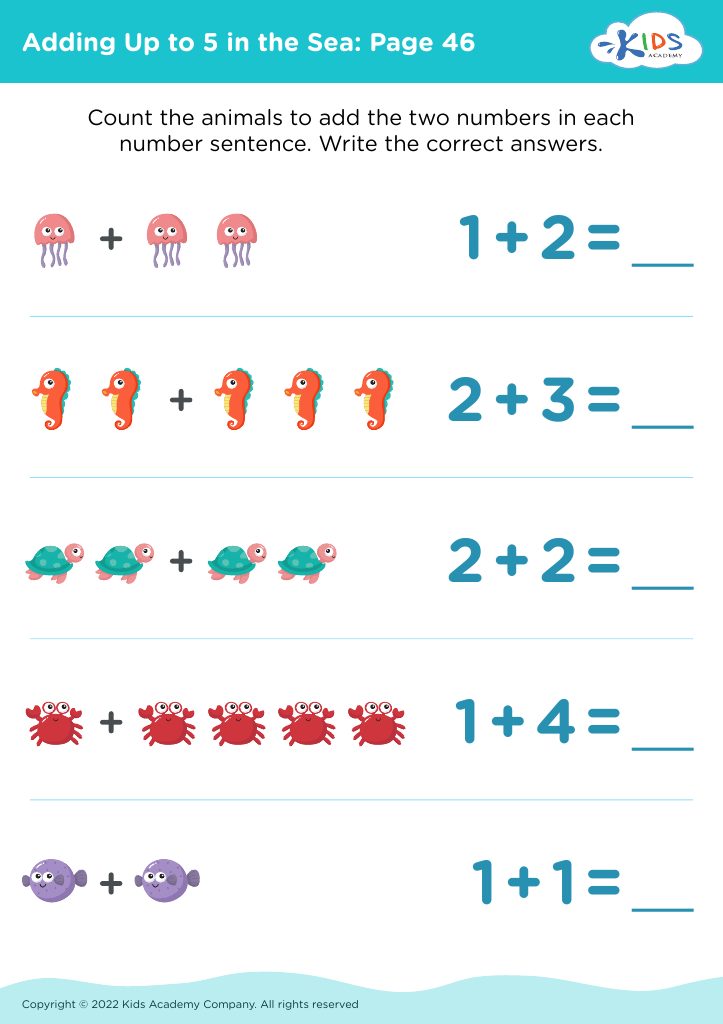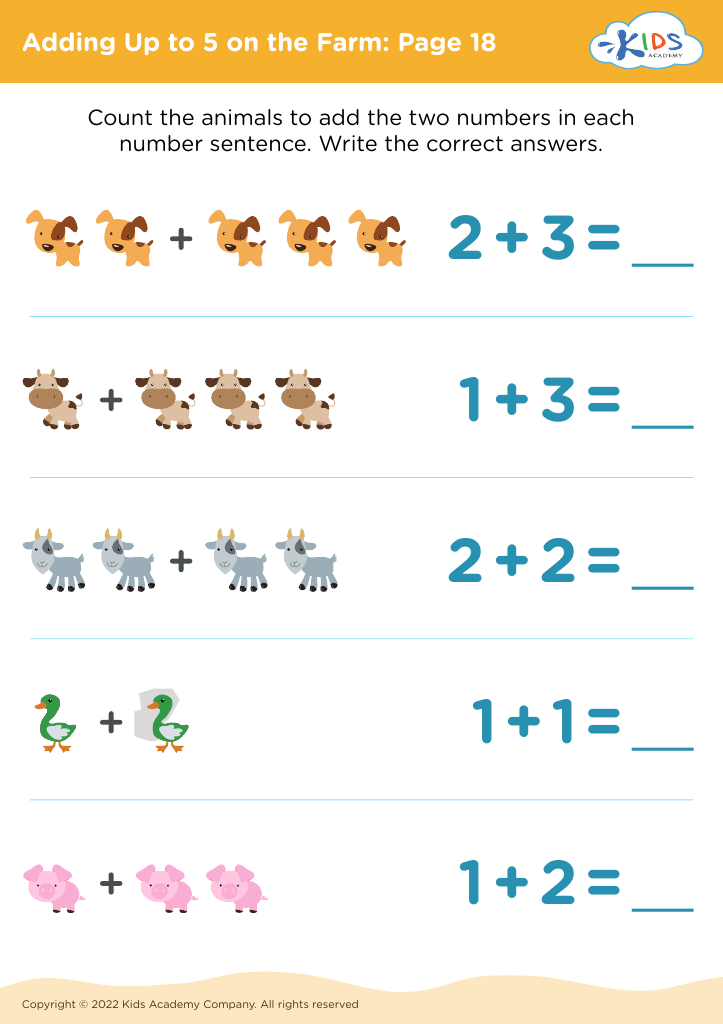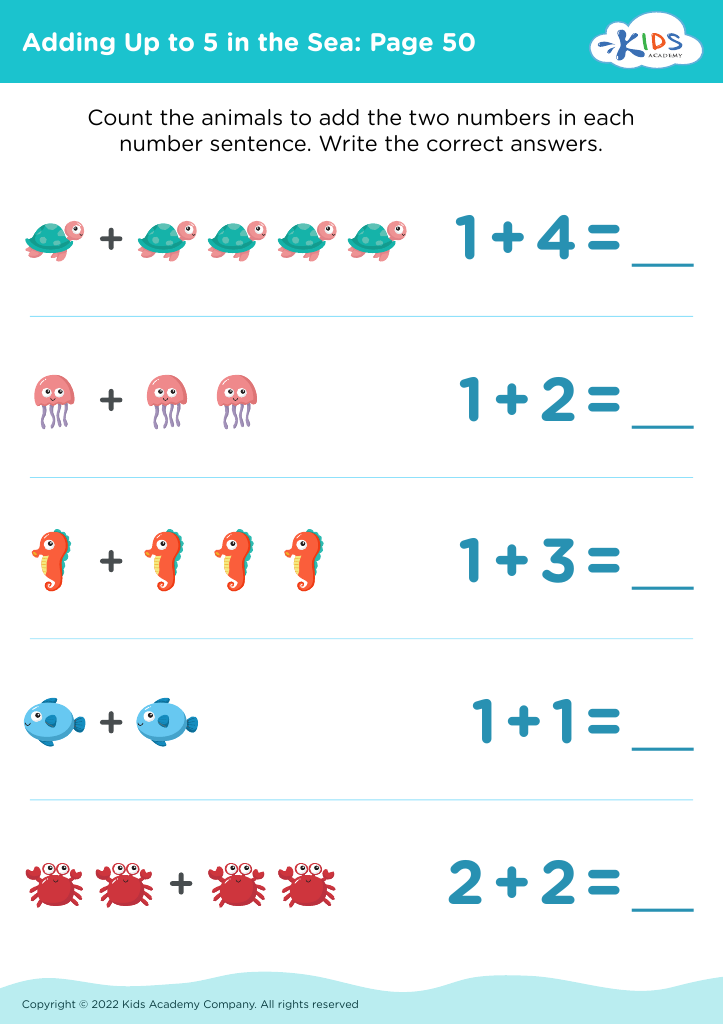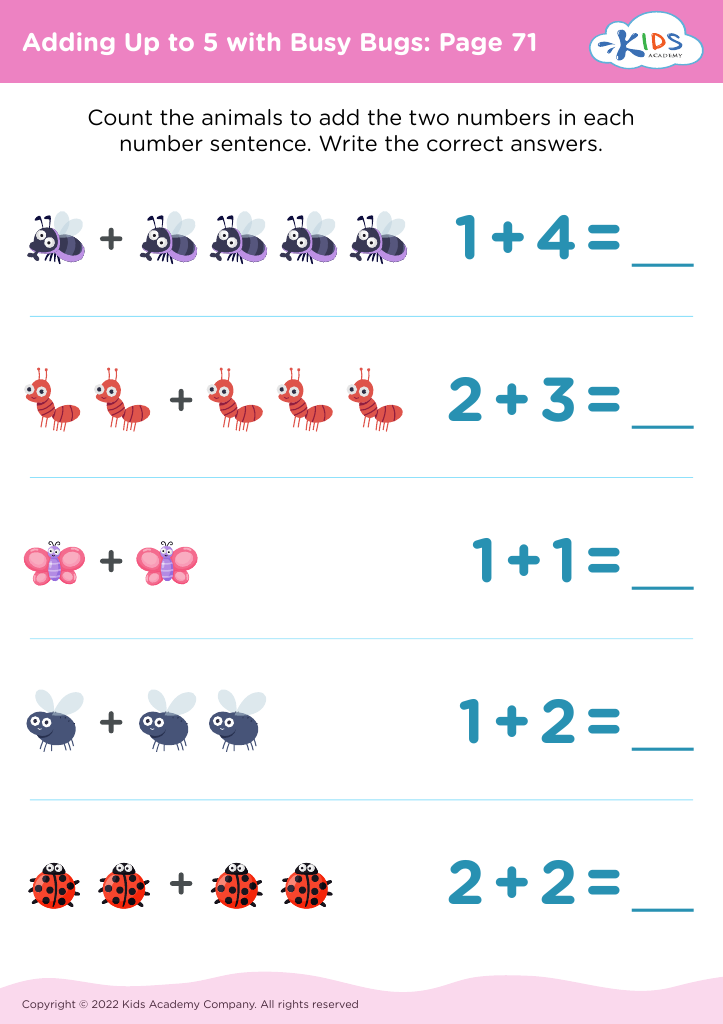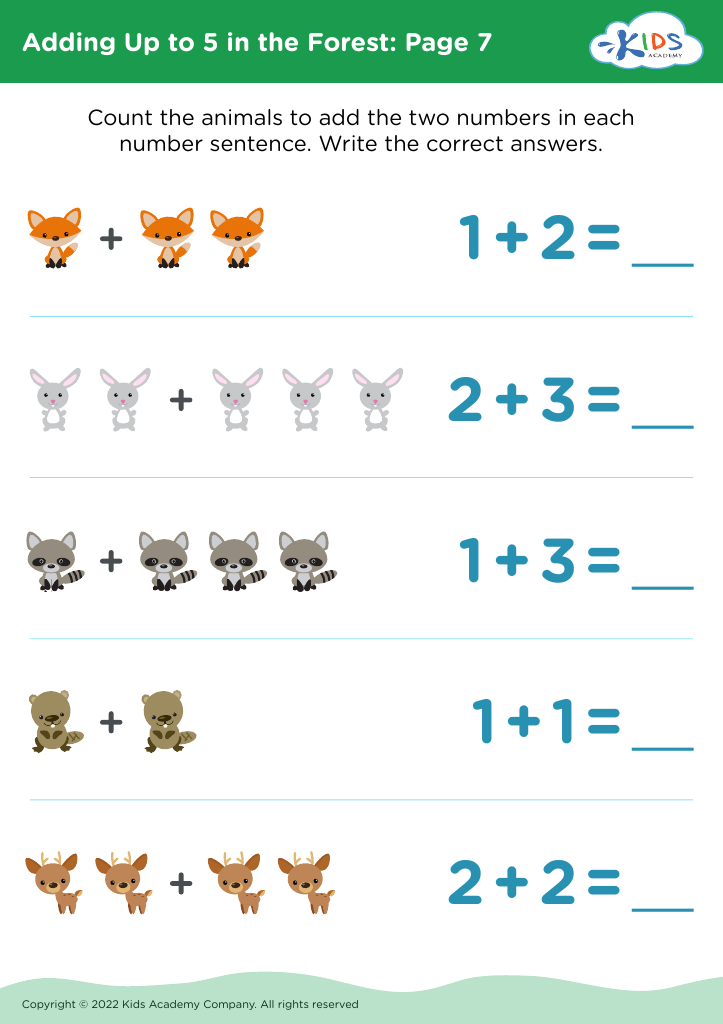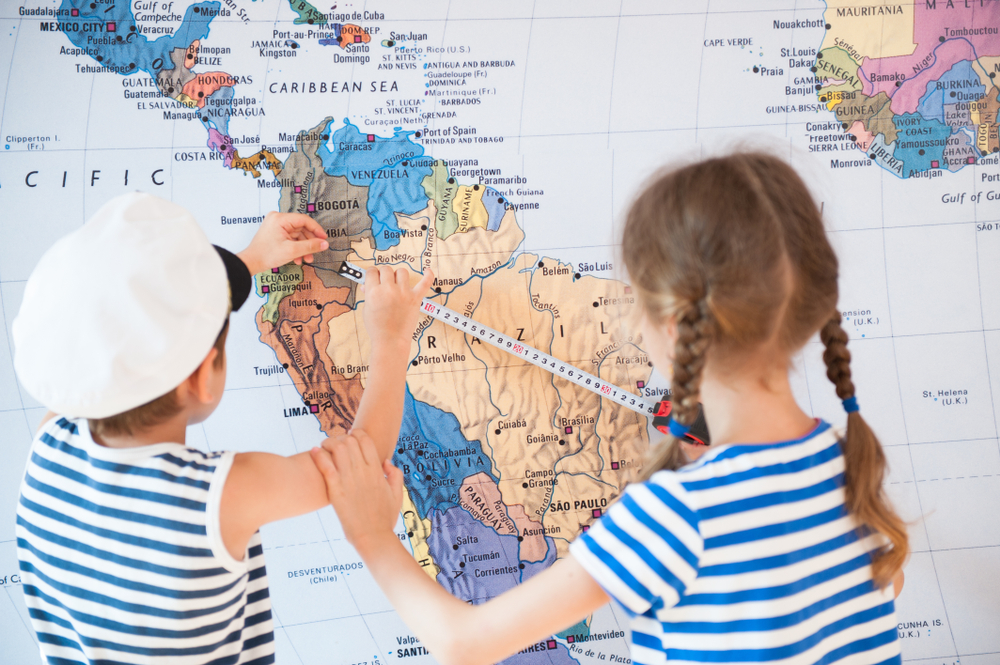Understanding Quantities Math Worksheets for Ages 4-8
50 filtered results
-
From - To
Discover our engaging "Understanding Quantities" math worksheets designed specifically for children aged 4-8. These interactive resources help young learners grasp essential math concepts through fun activities that promote recognition and comparison of numbers and quantities. Our worksheets feature vibrant illustrations and easy-to-follow instructions, making it effortless for educators and parents to enhance their child's learning experience. Each activity encourages critical thinking and lays a strong foundation for future math skills. Perfect for early learners, these worksheets will foster a love for math and build confidence in understanding quantities. Start your child's math journey today with our enriching worksheets!
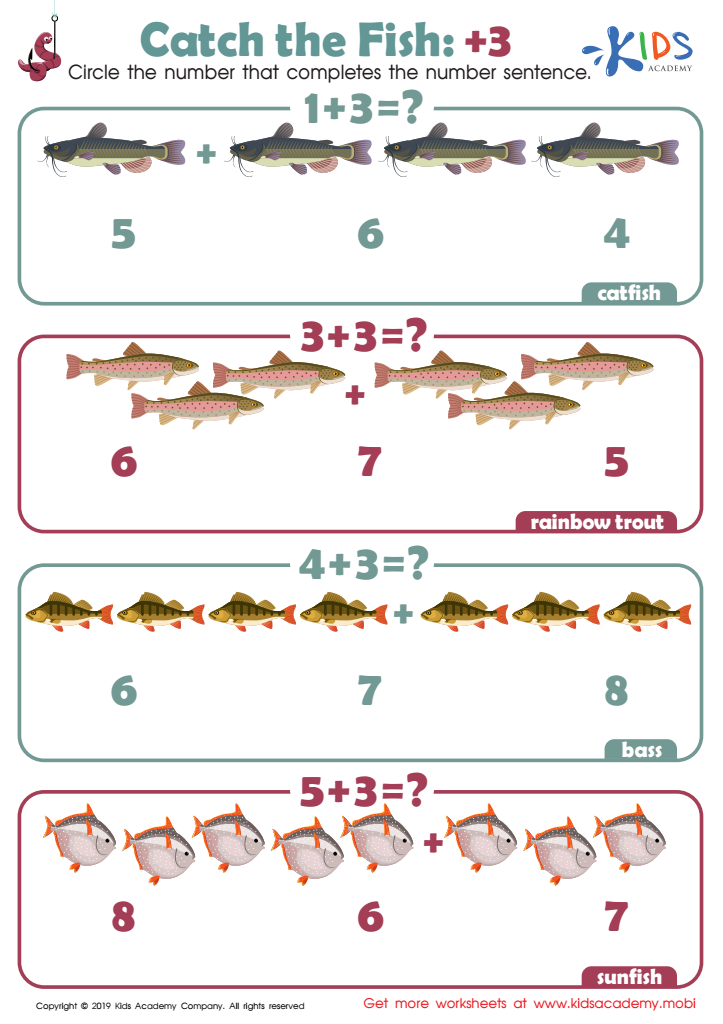

Catch the Fish: +3 Worksheet
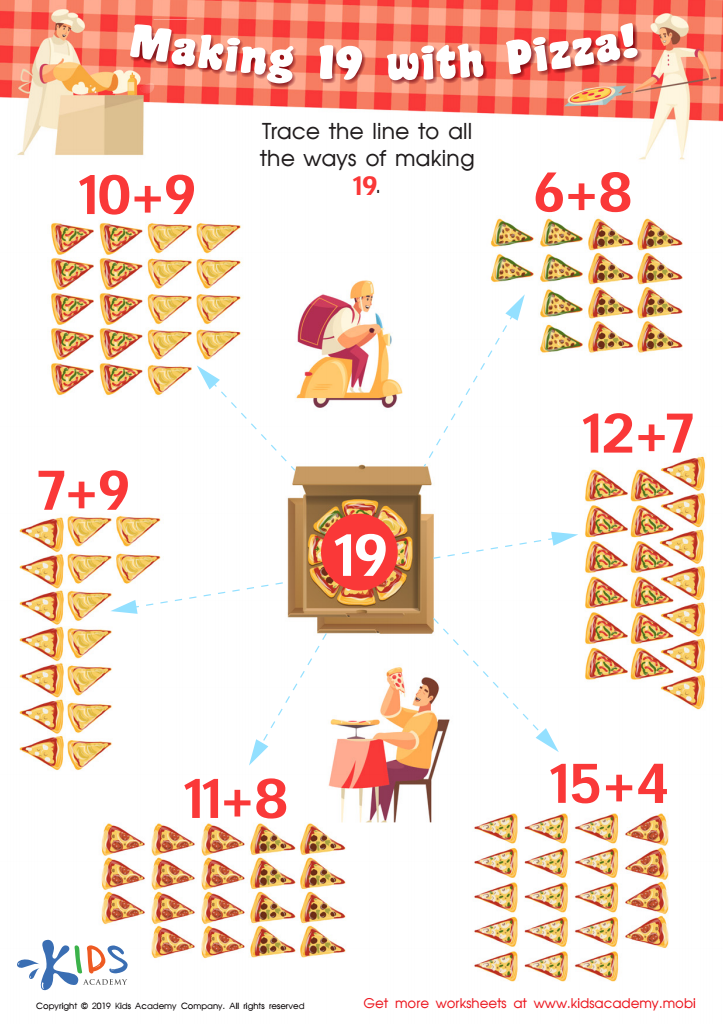

Making 19 with Pizza! Worksheet
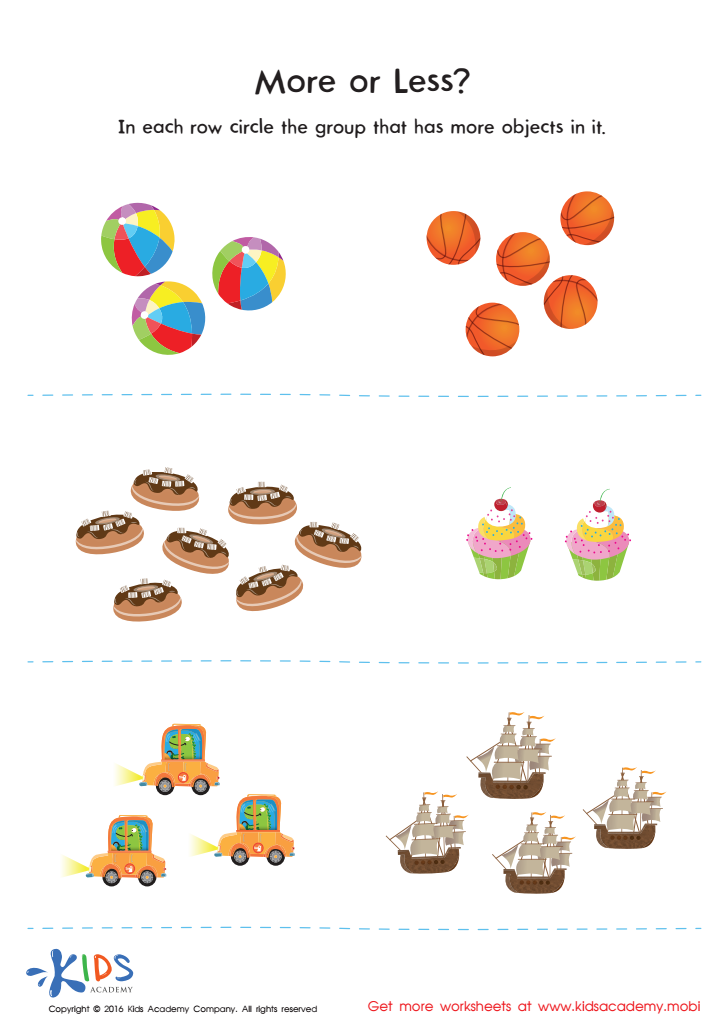

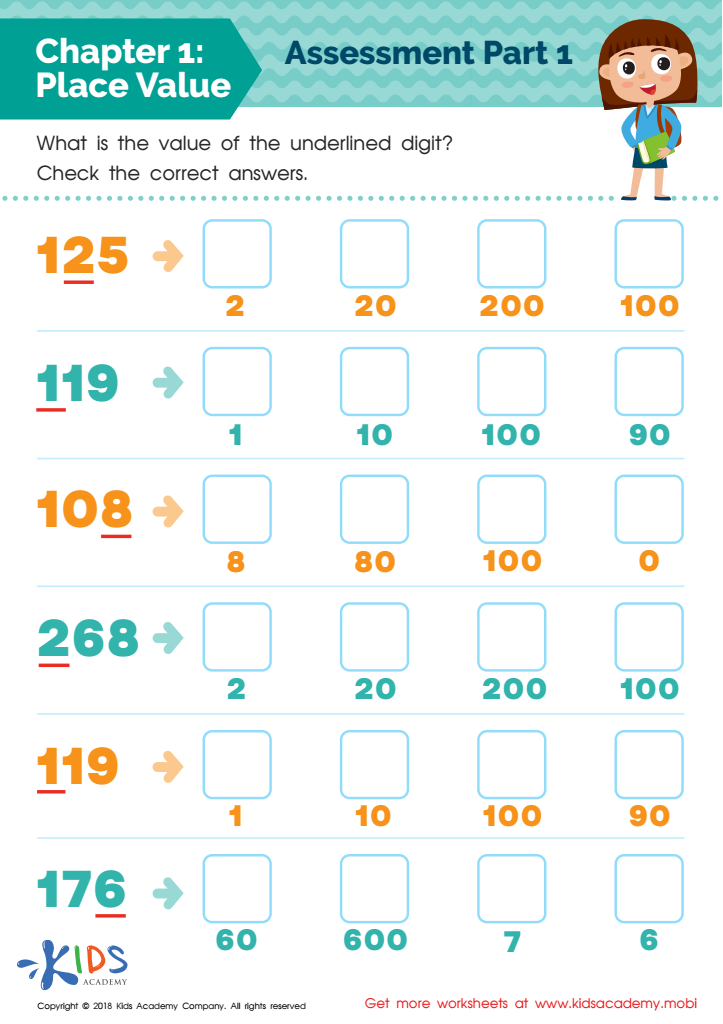

Place Value: Chapter 1 Worksheet
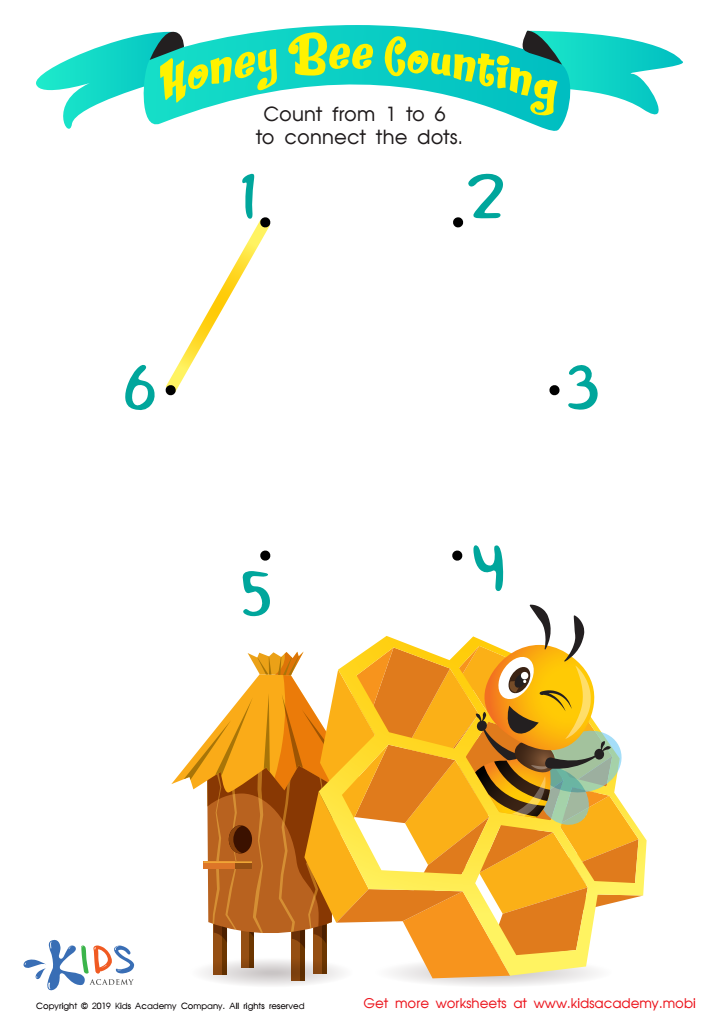

Honey Bee Counting Worksheet
Understanding quantities in math is crucial for children aged 4-8, as it lays the foundation for their future mathematical success and everyday problem-solving skills. During these formative years, children are developing their cognitive abilities, and grasping the concept of quantities helps them understand relationships with numbers, shapes, and patterns. When children learn to recognize, compare, and manipulate different quantities, they cultivate critical thinking, logical reasoning, and spatial awareness.
Teachers and parents play a pivotal role in fostering these skills, as supportive environments nurture curiosity and intrinsic motivation to explore math. Encouraging activities such as counting objects, sorting by size, or measuring during cooking can make learning about quantities engaging and fun. Furthermore, these skills not only contribute to academic achievement but also empower children in real-life situations, such as budgeting allowances or sharing with friends.
Investing time and resources into developing youngsters' understanding of quantities promotes mathematical literacy and confidence. Teachers can implement hands-on, play-based learning strategies, while parents can reinforce these lessons at home. Ultimately, a strong foundation in understanding quantities equips children with the skills they need to navigate and succeed in an increasingly math-driven world.
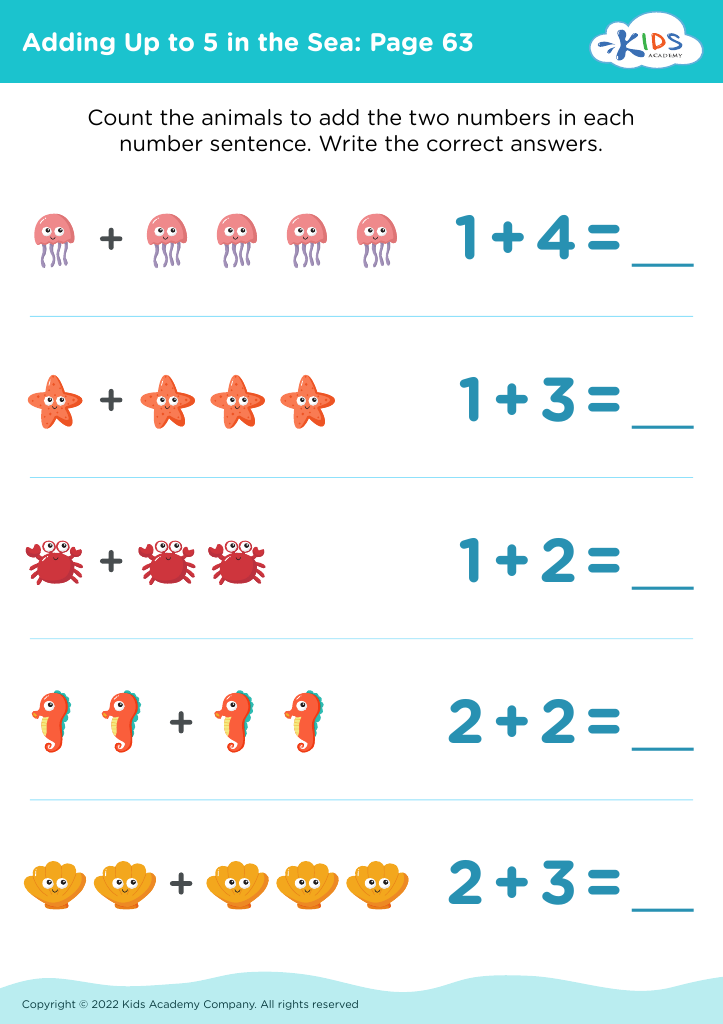
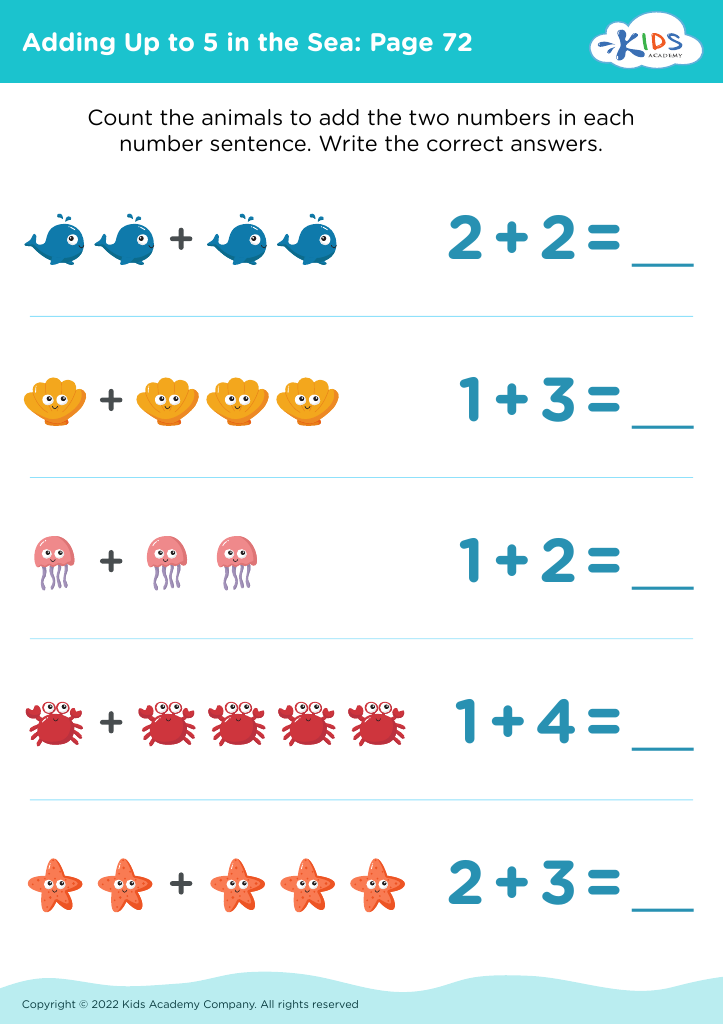
 Assign to My Students
Assign to My Students

